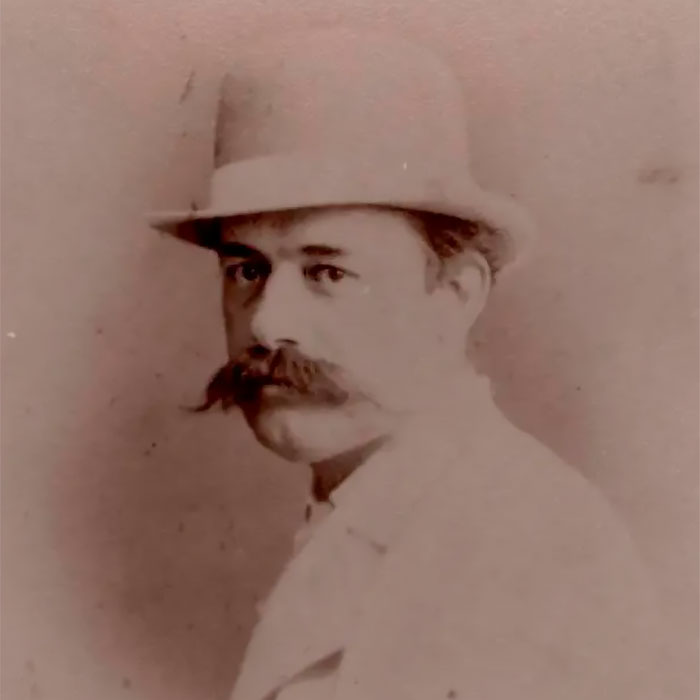In 1868, visionary Edward Tuckerman Potter created an iconic design that resonates in every stone, arch, and corner of Clayton University Center at Packer Hall. Lehigh is embarking on a journey to renew the University Center for the modern Lehigh community — while retaining the history of a building and its legacy of bringing students, faculty, and staff together. Enjoy this insight into the past, then look ahead and learn more about the Clayton University Center renovations and how you can get involved.
An "aggressively muscular Victorian Gothic essay"
Packer Hall — aka Clayton University Center — is without question the most iconic building on Lehigh University’s campus, the one generations of alumni have fallen in love with at first sight on campus tours. The edifice, called “an aggressively muscular Victorian Gothic essay” by the Society for Architectural Historians, is the work of 19th-century architect Edward Tuckerman Potter, renowned for his eclectic flair for blending various architectural styles and materials.

A high-achieving family
Potter was born in 1831 in Schenectady, New York, into a family with deep artistic, religious, and academic roots. His father, Alonzo Potter, was a bishop in the Episcopal Church of the United States, serving in the Diocese of Pennsylvania for more than 20 years. Edward’s mother, Sarah, was the daughter of Eliphalet Nott, president of Union College in Schenectady. Nott was famous in his own right for being the longest-serving college president — 62 years — in American history.
Edward Potter developed an appreciation for architecture and design from a young age and pursued his education in architecture, a relatively new academic discipline in the United States at the time. His travels to Europe further influenced his architectural style, as he absorbed elements from Gothic, Romanesque, and other classical styles prevalent in European architecture.
An illustrious career
Potter’s return to the United States marked the beginning of a prolific career. His designs were characterized by their creativity and experimentation with different styles and materials. This approach made Potter a sought-after architect for various significant projects, including churches, educational institutions, and homes. He was later known as the “Episcopal Architect” for his work on more than 10 churches across the country, including the Cathedral Church of the Nativity in Bethlehem. Potter was also engaged by Samuel Langhorne Clemens (aka Mark Twain) to build his family’s dream home in Connecticut. For this work and others, Potter’s name appears 14 times on the National Register of Historic Places.
Iconic Lehigh architecture
Lehigh University's association with Potter came at a pivotal moment in the university's history. In 1865, industrialist Asa Packer was in the process of establishing Lehigh’s identity and physical footprint. Potter, known for his unique architectural language, was seen as the perfect choice to contribute to Packer’s vision.
Potter received input on the building’s design from the bishop of the Episcopal Diocese of Pennsylvania and president of Lehigh’s Board of Trustees, William Bacon Stevens; the bishop's brother-in-law and president of the university, Henry Coppée; and, of course, Packer himself. In fact, although Potter had a predilection for Gothic architecture featuring polychrome (multicolored) brick and wanted to use it for Packer Hall, Packer insisted instead on stone from local quarries.
Packer Hall was designed as three interconnected buildings: an imposing, church steeple-like tower on the west, containing the president's office; a central portion with a chapel, museum, and engineering drawing room; and a four-story block on the east for classrooms, offices, laboratories, and for a time, dormitory rooms. The building reflected a blend of Gothic revival and Romanesque styles with distinctive design elements such as pointed arches, detailed stonework, and a robust, castle-like appearance that make it a focal point of the university campus. Potter also designed the President’s House and Linderman Library as part of his plan for the campus, although alterations and additions have obscured the three buildings’ architectural unity.
Through his design of Packer Hall, Potter not only contributed a masterful architectural work but also helped shape the university's identity and legacy. His work at Lehigh stands as a testament to his architectural vision and the university's commitment to excellence, remaining a cherished part of its campus to this day.

In September, the construction crew renovating the UC remembered the legacy of the original design by honoring Potter on what would have been his 192nd birthday. They shared cake to recognize the man who brought the original building to life as they worked to modernize the interior for today's student needs, a project made possible by the continued collaboration and support of the extended Lehigh community.
Discover More
Reimagining the Heart of Campus

Clayton University Center at Packer Hall
More than a building, the Clayton University Center at Packer Hall is the heart of the Lehigh campus. Current renovations will reinvent the Clayton UC into a vibrant space that fosters collaboration and equips students with the skills to lead.


